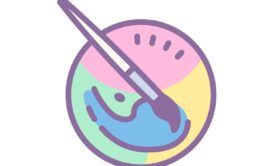8818 students have accelerated their skills with this course
Design Courses

Filters
Courses to get you started
Discover More In Design Courses
Filters
Design Courses

According to the Bureau of Labor Statistics, about 23,900 new design jobs open per year. This estimate does not even include freelance-based vacancies. Considering that design jobs can also pay lucratively, many people desire to shift toward this career.
Thankfully, there are no restrictions on becoming a designer. While having an art degree is ideal, anyone with talent and tools can take on any designer job. Besides, designing is a skill that can improve through practice and experience.
Another good news is that one no longer needs to be in a studio or physical art class to be a designer. As technology improves, design-related skills can now be transferrable and learnable digitally. One of the easiest and fastest solutions to learn design skills is undergoing online design courses.
You can find expert-made but easy-to-follow online design courses at Skill Success. Our e-library covers graphic design basics like design fundamentals until modern and rigorous subjects like UX and UI. Here are other options to choose from: Are you looking for other design courses? Skill Success updates its online repertoire every week. So, subscribe to our monthly and annual subscription and watch out for new classes.
Thankfully, there are no restrictions on becoming a designer. While having an art degree is ideal, anyone with talent and tools can take on any designer job. Besides, designing is a skill that can improve through practice and experience.
Another good news is that one no longer needs to be in a studio or physical art class to be a designer. As technology improves, design-related skills can now be transferrable and learnable digitally. One of the easiest and fastest solutions to learn design skills is undergoing online design courses.
You can find expert-made but easy-to-follow online design courses at Skill Success. Our e-library covers graphic design basics like design fundamentals until modern and rigorous subjects like UX and UI. Here are other options to choose from: Are you looking for other design courses? Skill Success updates its online repertoire every week. So, subscribe to our monthly and annual subscription and watch out for new classes.
Most commonly asked questions about Design Courses
A design course encapsulates knowledge, skills, and techniques on how learners can use design in several instances. It typically covers lessons on basic designs and graphic design history. Design courses will mold learners into capable artisans who can produce results satisfactory to specific clients.
Design courses come in different shapes and sizes. More traditional ones center on architecture, sculpting, and drawing. On the other hand, the contemporary side of design caters to photography, web design, and 3D modeling. There are also design courses for more functional purposes. These courses also train professionals to reimagine the design process to develop creative solutions for existing problems. Through ingenious designs, humans can advance and contribute something never seen before.
Some concrete examples include interior and exterior designs. These design courses will help students create interior and exterior spaces that make daily living more comfortable. After all, designs do not have to remain stagnant and only serve an aesthetic purpose.
Overall, design courses aim to translate creative ideas into something tangible and new. Whether one uses lines, forms, or whatever material as the basis, the result should be something original. The outputs should reflect the designer's prowess in choosing what elements to mix and match.
Design courses come in different shapes and sizes. More traditional ones center on architecture, sculpting, and drawing. On the other hand, the contemporary side of design caters to photography, web design, and 3D modeling. There are also design courses for more functional purposes. These courses also train professionals to reimagine the design process to develop creative solutions for existing problems. Through ingenious designs, humans can advance and contribute something never seen before.
Some concrete examples include interior and exterior designs. These design courses will help students create interior and exterior spaces that make daily living more comfortable. After all, designs do not have to remain stagnant and only serve an aesthetic purpose.
Overall, design courses aim to translate creative ideas into something tangible and new. Whether one uses lines, forms, or whatever material as the basis, the result should be something original. The outputs should reflect the designer's prowess in choosing what elements to mix and match.
Traditionally, you need to go to art school to learn graphic design. Some schools like Parsons School of Design, Rhode Island School of Design, and The Pratt Institute specialize in this field. However, that is no longer the case today.
As time goes by, studying graphic design is no longer strictly confined to schools or training centers. There is no need to get a 4-year degree to start in this industry. It is learnable anywhere, anytime.
Many graphic designers are self-taught and learned their craft by observing others. However, learning graphic design by yourself is challenging because no one could mentor you. If you wish to learn graphic design the easiest way possible, it is best to go online.
Skill Success has one of the most accessible, digestible, and affordable graphic design classes on the World Wide Web. We offer expert-made courses designed for beginners to masters. In addition, since we have pre-recorded classes, you can adjust the pacing of each class to your liking.
Aside from being easy, learning at Skill Success will help improve your resume. Upon completing a course, we automatically issue a certificate in your name. You can use said certificates to prove your newly earned skills and knowledge.
As time goes by, studying graphic design is no longer strictly confined to schools or training centers. There is no need to get a 4-year degree to start in this industry. It is learnable anywhere, anytime.
Many graphic designers are self-taught and learned their craft by observing others. However, learning graphic design by yourself is challenging because no one could mentor you. If you wish to learn graphic design the easiest way possible, it is best to go online.
Skill Success has one of the most accessible, digestible, and affordable graphic design classes on the World Wide Web. We offer expert-made courses designed for beginners to masters. In addition, since we have pre-recorded classes, you can adjust the pacing of each class to your liking.
Aside from being easy, learning at Skill Success will help improve your resume. Upon completing a course, we automatically issue a certificate in your name. You can use said certificates to prove your newly earned skills and knowledge.
Studying graphic design online is possible, and there are two typical ways to go about it. First, learners attend courses by accredited art universities offering online graphic design degrees. The other way is accomplishing specialized e-courses that learners can finish as early as a few hours.
Attending online graphic design schools can be more restrictive. Students should comply with strict requirements like attendance, projects, and quarterly evaluations. Missing any of these could prevent a student from graduating. On the other hand, finishing e-courses is much easier. Students do not have to deal with attendance or projects. All they have to do is concentrate on the lesson, practice during their spare time, and find unique applications to their new learnings.
Skill Success is one of the most renowned online platforms offering graphic design e-courses. You can assure that every lesson is well-studied and cautiously designed to fit the needs of many learners. No matter the class, the instructions are always easy-to-follow.
Our e-library houses a wide variety of graphic design classes. So no matter your level of expertise, we have a course that can expand your skill sets. Skill Success covers the basics, most in-demand, and even niche graphic design courses.
Attending online graphic design schools can be more restrictive. Students should comply with strict requirements like attendance, projects, and quarterly evaluations. Missing any of these could prevent a student from graduating. On the other hand, finishing e-courses is much easier. Students do not have to deal with attendance or projects. All they have to do is concentrate on the lesson, practice during their spare time, and find unique applications to their new learnings.
Skill Success is one of the most renowned online platforms offering graphic design e-courses. You can assure that every lesson is well-studied and cautiously designed to fit the needs of many learners. No matter the class, the instructions are always easy-to-follow.
Our e-library houses a wide variety of graphic design classes. So no matter your level of expertise, we have a course that can expand your skill sets. Skill Success covers the basics, most in-demand, and even niche graphic design courses.
Answering whether taking graphic design classes online is worth it or not will boil down to one's personal preferences. After all, everyone has their opinion. However, there are multiple reasons why online graphic design courses are more advantageous.
Statistics show that students retain 25% and 60% of their lessons through e-learning compared to the 8% to 10% rate in regular classrooms. This retention level is relevant, especially in graphic design classes where students regularly practice their skills to improve. Based on this finding, students attending graphic design classes could absorb more information and improve at a faster speed.
Having online graphic design classes is convenient, too. Learners do not have to leave their houses and go to an art studio. Online courses are available anytime and anywhere so long as the accessing user can connect to the internet.
Online graphic design courses will allow learners to be in their preferred spaces. Besides having the essential tools for graphic design projects, learners do not have to comply with anything else. After hitting play, learners can observe the professional graphic designer demonstrating on the screen and gradually learn the fundamental skills.
Having the option to polish graphic design skills through an online learning platform is never bad. It is fast and hassle-free.
Statistics show that students retain 25% and 60% of their lessons through e-learning compared to the 8% to 10% rate in regular classrooms. This retention level is relevant, especially in graphic design classes where students regularly practice their skills to improve. Based on this finding, students attending graphic design classes could absorb more information and improve at a faster speed.
Having online graphic design classes is convenient, too. Learners do not have to leave their houses and go to an art studio. Online courses are available anytime and anywhere so long as the accessing user can connect to the internet.
Online graphic design courses will allow learners to be in their preferred spaces. Besides having the essential tools for graphic design projects, learners do not have to comply with anything else. After hitting play, learners can observe the professional graphic designer demonstrating on the screen and gradually learn the fundamental skills.
Having the option to polish graphic design skills through an online learning platform is never bad. It is fast and hassle-free.
Taking an online course on graphic design begins with finding the platform you can trust. If you are looking for hassle-free learning supervised by professionals with years of experience, trust Skill Success. We partner with successful graphic designers and other industry leaders excited to impart knowledge and skills to interested learners.
You can start with our courses by creating an account. Fill in the necessary details, and we will prepare an account for you in a short while. Visiting your account page will display your accomplished courses, ongoing classes, and those added to the favorites list. We implemented this feature to ensure you have an easier time organizing multiple courses.
After registering with Skill Success, please choose how you will pay for the subscription service. Then, select the All Access Pass promo to make the most of our 3,000+ courses. It is a practical way to learn more about graphic design and other courses without paying extra.
You can start with our courses by creating an account. Fill in the necessary details, and we will prepare an account for you in a short while. Visiting your account page will display your accomplished courses, ongoing classes, and those added to the favorites list. We implemented this feature to ensure you have an easier time organizing multiple courses.
After registering with Skill Success, please choose how you will pay for the subscription service. Then, select the All Access Pass promo to make the most of our 3,000+ courses. It is a practical way to learn more about graphic design and other courses without paying extra.
Becoming a graphic designer is not the easiest thing ever, but it does not have severe restrictions that only a select few people can make it through. If you are planning to be a graphic designer but does not know where to start, here is a simplified step-by-step process you can follow:
1. Take a graphic design course. No one becomes a professional right away without knowing a profession. Find a graphic design course of your liking and learn its contents. Get to know the subject well and become an expert in it.
Your learning experience should not only be limited to learning the theoretical frameworks of a subject. Knowing the different ways of applying the said subject in real-world settings is equally essential, too. For graphic design, learners should find old and new ways to utilize design concepts.
Learning from an expert will help you discover the skills necessary to succeed in the industry. In addition, receiving professional guidance is a significant stepping stone to becoming a full-fledged graphic designer.
2. Learn the basics of graphic design. No matter how talented you are, it is much better to start from the basics. Over the years, experts created fundamental concepts of graphic designs. While they are not unbreakable rules, they set patterns even the most successful graphic designers use when working on projects.
Some of the most important first lessons in graphic design courses focus on lines, shapes, colors, textures, types, spaces, and images. Learning to manipulate these elements will enable designers to bring concepts to life. Graphic designers could use different mediums and styles but must rely on the essential parts to start or finish projects.
3. Find your style. Even if all graphic designers take the same graphic design class, they will not become the same type of professional. One of the biggest reasons for deviation is that everyone has their style. While still learning graphic design, make it a priority to know your style/s.
Graphic design styles are not rigid and not necessarily definite. Sometimes, it is a matter of preference and strength. When you find your style, it will form part of your identity as a graphic designer.
4. Find your first gig. Graphic design is not only about learning. After gaining knowledge of the fundamental concepts and processes, it is time to put what you have learned to the test. Try landing your first graphic design gig.
It can be nerve-wracking, but it is a necessary first step for all graphic designers. Luckily, graphic design gigs are relatively easy to find. Apply to multiple ones to increase your chances of success, and keep persevering even if you receive rejections.
5. Continuously upgrade your skills. Working on gigs one after the other is another way to expand your knowledge and skills in graphic design. This way, you will learn more about yourself and the market. You will eventually know what industry suit you best and the people who will most likely support your art.
For this reason, it is critical to keep on taking jobs. Each project will give you a new lesson. Also, the more you keep up with the grind, the more you get better.
1. Take a graphic design course. No one becomes a professional right away without knowing a profession. Find a graphic design course of your liking and learn its contents. Get to know the subject well and become an expert in it.
Your learning experience should not only be limited to learning the theoretical frameworks of a subject. Knowing the different ways of applying the said subject in real-world settings is equally essential, too. For graphic design, learners should find old and new ways to utilize design concepts.
Learning from an expert will help you discover the skills necessary to succeed in the industry. In addition, receiving professional guidance is a significant stepping stone to becoming a full-fledged graphic designer.
2. Learn the basics of graphic design. No matter how talented you are, it is much better to start from the basics. Over the years, experts created fundamental concepts of graphic designs. While they are not unbreakable rules, they set patterns even the most successful graphic designers use when working on projects.
Some of the most important first lessons in graphic design courses focus on lines, shapes, colors, textures, types, spaces, and images. Learning to manipulate these elements will enable designers to bring concepts to life. Graphic designers could use different mediums and styles but must rely on the essential parts to start or finish projects.
3. Find your style. Even if all graphic designers take the same graphic design class, they will not become the same type of professional. One of the biggest reasons for deviation is that everyone has their style. While still learning graphic design, make it a priority to know your style/s.
Graphic design styles are not rigid and not necessarily definite. Sometimes, it is a matter of preference and strength. When you find your style, it will form part of your identity as a graphic designer.
4. Find your first gig. Graphic design is not only about learning. After gaining knowledge of the fundamental concepts and processes, it is time to put what you have learned to the test. Try landing your first graphic design gig.
It can be nerve-wracking, but it is a necessary first step for all graphic designers. Luckily, graphic design gigs are relatively easy to find. Apply to multiple ones to increase your chances of success, and keep persevering even if you receive rejections.
5. Continuously upgrade your skills. Working on gigs one after the other is another way to expand your knowledge and skills in graphic design. This way, you will learn more about yourself and the market. You will eventually know what industry suit you best and the people who will most likely support your art.
For this reason, it is critical to keep on taking jobs. Each project will give you a new lesson. Also, the more you keep up with the grind, the more you get better.
Like graphic design, web design is also learnable online. You can also choose between enrolling in an accredited online school or taking specialized web design classes. Of these two, selecting the second option is faster and more practical.
Web designing is a broad concept, but it has two main parts: designing and code building. On one end, web designing concerns the aesthetic value of websites and other platforms to satisfy users. On the other, web designing has a technical back end that relies on coding and other computer languages.
Skill Success offers a comprehensive list of web design courses. We have classes that cover tips and techniques for designing a website through today's most widely used tools. We are confident that inexperienced and master web designers can find something new and helpful in our lessons.
Studying web design through specialized online courses is "in" right now. As the job marketplace shifts toward skill-based hiring, companies no longer require their web designers to have a relevant diploma to be eligible for a web designing job. If applicants have the needed skill and experiences, they may stand equally with those with degrees.
Are you looking for a specific skill in web designing? Be sure to check out Skill Success' extensive e-library.
Web designing is a broad concept, but it has two main parts: designing and code building. On one end, web designing concerns the aesthetic value of websites and other platforms to satisfy users. On the other, web designing has a technical back end that relies on coding and other computer languages.
Skill Success offers a comprehensive list of web design courses. We have classes that cover tips and techniques for designing a website through today's most widely used tools. We are confident that inexperienced and master web designers can find something new and helpful in our lessons.
Studying web design through specialized online courses is "in" right now. As the job marketplace shifts toward skill-based hiring, companies no longer require their web designers to have a relevant diploma to be eligible for a web designing job. If applicants have the needed skill and experiences, they may stand equally with those with degrees.
Are you looking for a specific skill in web designing? Be sure to check out Skill Success' extensive e-library.
Web designers can be self-taught professionals. Even without getting an art degree, it is still possible for a person to earn impeccable skills and compete against those that have them. Online classes are the best ways to become a web designer today.
These steps can help you turn into a full-fledged web designer:
1. Complete a web design course. A web design course will grant learners the skills and knowledge necessary for web designing. Online courses, for example, can give a quick rundown of what web designers should do in specific projects. From that point, they can keep building their prowess to succeed in the industry.
Web design courses cover graphics, programming languages, web design theories, and communication skills. These topics will enable web designers to produce high-quality outputs.
Experienced web designers should also take courses from time to time. Standards and demands change, so it is critical to learn new things.
2. Familiarize with key web design concepts. Web design concepts refer to techniques and principles that guide designers in creating impressive interfaces, web pages, and other platforms. These concepts are not absolute. However, following them makes a web designer's job easier and more organized.
Web design concepts serve different purposes. Depending on the project, web designers should apply concepts that fulfill clients' needs. Therefore, web designers should not only master the concepts but also know when and how to use them.
One of the most relevant web design concepts today is being user-centric. Web platforms should always be accessible to users and immediately provide the most significant information.
3. Practice using different web design tools. Web design tools exist for designing, creating, and implementing websites and other online interfaces. In addition, some web design tools are necessary to test and debug codes. These tools are essentially the bread and butter of web designers.
It is almost impossible to create websites and their accessories from scratch. Even if possible, the process will take a lot of time. Mastering how to use web design tools is not only efficient for production purposes but is also time-saving.
Like web design skills and demands, the tools also evolve with time. Web designers should regularly update their tool proficiency to remain competitive.
4. Build a web design portfolio. After learning the basics of web design, acquiring relevant skills, and learning how to use the tools, it is time to build a portfolio. If you are an inexperienced web designer, a well-made portfolio will help you land gigs. Besides, creating sample websites is a practical way to spend your free time.
Create in-depth portfolios. Hollow websites may not appear as convincing and appealing to clients. Realistic and functional web designs will show your initiative as a designer.
Also, create web designs for different purposes. Keep exploring various styles to expand your range as a designer.
5. Find web design jobs at freelancing sites. Web design jobs are all over job marketplaces. Since most job posts are for remote work, anyone from anywhere can take it. Even if you are a beginner, you will eventually land a gig after applying to a few posts.
There are many types of web designs available. For beginners, it is advisable to take simpler and smaller projects. Build a reputation through more manageable tasks and slowly take on more challenging roles.
Find web design jobs at Indeed, Upwork, Jobstreet, and Monster.
These steps can help you turn into a full-fledged web designer:
1. Complete a web design course. A web design course will grant learners the skills and knowledge necessary for web designing. Online courses, for example, can give a quick rundown of what web designers should do in specific projects. From that point, they can keep building their prowess to succeed in the industry.
Web design courses cover graphics, programming languages, web design theories, and communication skills. These topics will enable web designers to produce high-quality outputs.
Experienced web designers should also take courses from time to time. Standards and demands change, so it is critical to learn new things.
2. Familiarize with key web design concepts. Web design concepts refer to techniques and principles that guide designers in creating impressive interfaces, web pages, and other platforms. These concepts are not absolute. However, following them makes a web designer's job easier and more organized.
Web design concepts serve different purposes. Depending on the project, web designers should apply concepts that fulfill clients' needs. Therefore, web designers should not only master the concepts but also know when and how to use them.
One of the most relevant web design concepts today is being user-centric. Web platforms should always be accessible to users and immediately provide the most significant information.
3. Practice using different web design tools. Web design tools exist for designing, creating, and implementing websites and other online interfaces. In addition, some web design tools are necessary to test and debug codes. These tools are essentially the bread and butter of web designers.
It is almost impossible to create websites and their accessories from scratch. Even if possible, the process will take a lot of time. Mastering how to use web design tools is not only efficient for production purposes but is also time-saving.
Like web design skills and demands, the tools also evolve with time. Web designers should regularly update their tool proficiency to remain competitive.
4. Build a web design portfolio. After learning the basics of web design, acquiring relevant skills, and learning how to use the tools, it is time to build a portfolio. If you are an inexperienced web designer, a well-made portfolio will help you land gigs. Besides, creating sample websites is a practical way to spend your free time.
Create in-depth portfolios. Hollow websites may not appear as convincing and appealing to clients. Realistic and functional web designs will show your initiative as a designer.
Also, create web designs for different purposes. Keep exploring various styles to expand your range as a designer.
5. Find web design jobs at freelancing sites. Web design jobs are all over job marketplaces. Since most job posts are for remote work, anyone from anywhere can take it. Even if you are a beginner, you will eventually land a gig after applying to a few posts.
There are many types of web designs available. For beginners, it is advisable to take simpler and smaller projects. Build a reputation through more manageable tasks and slowly take on more challenging roles.
Find web design jobs at Indeed, Upwork, Jobstreet, and Monster.


































































